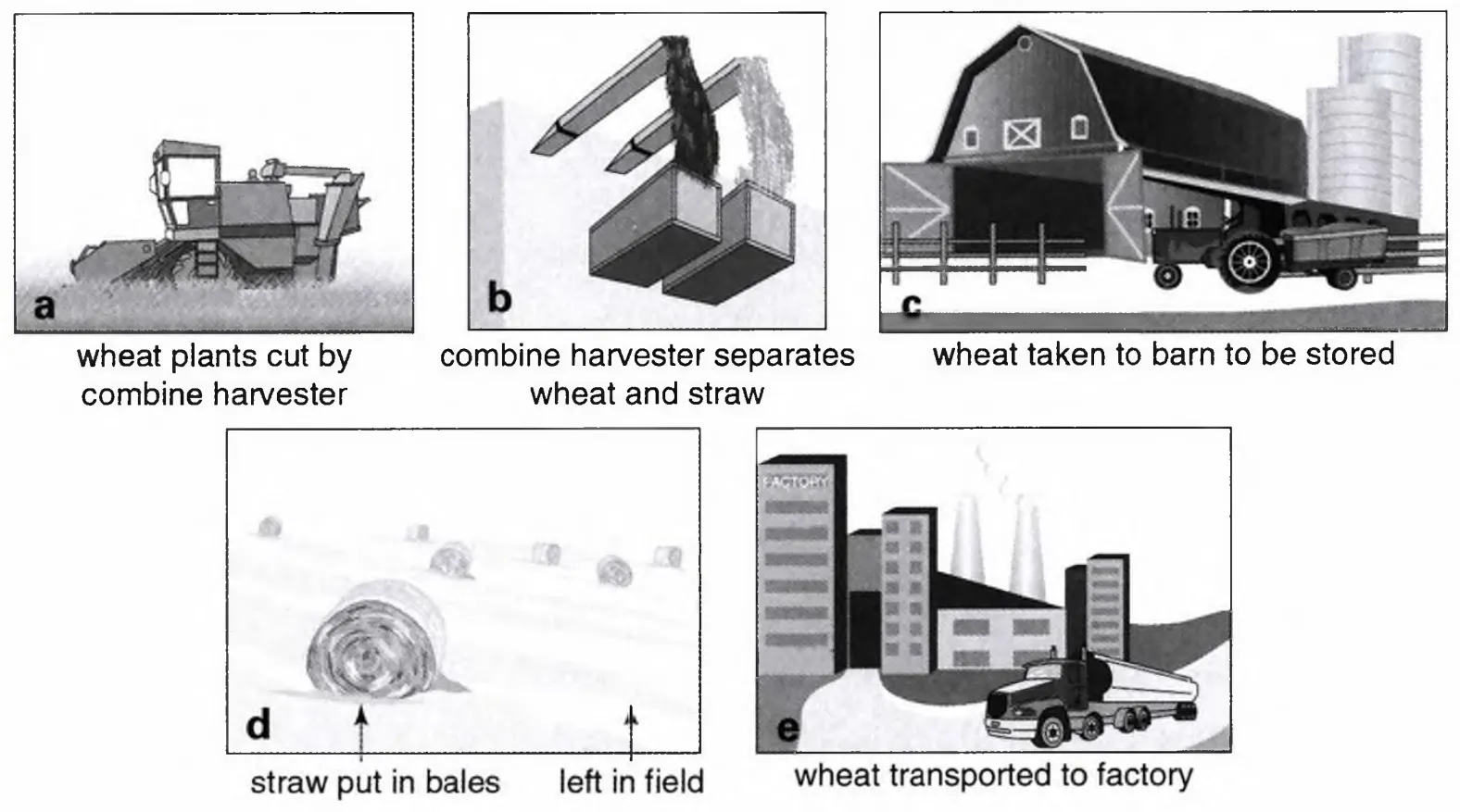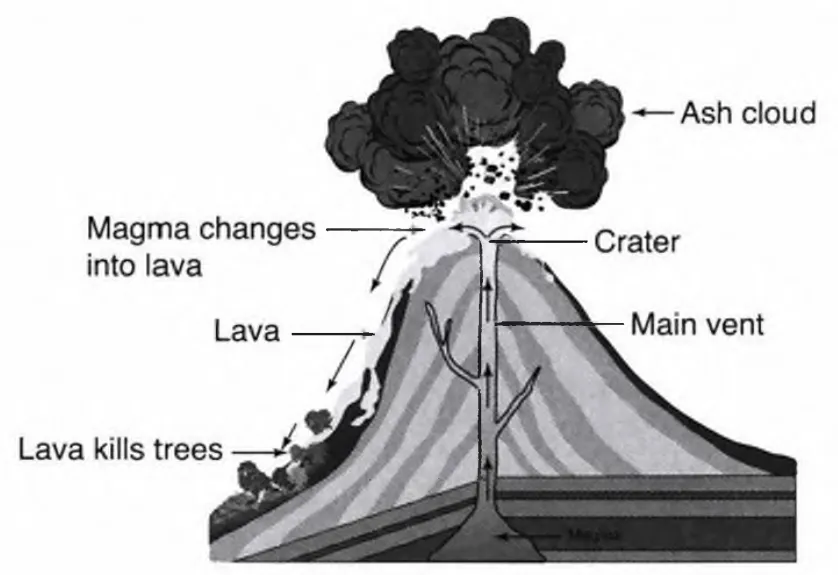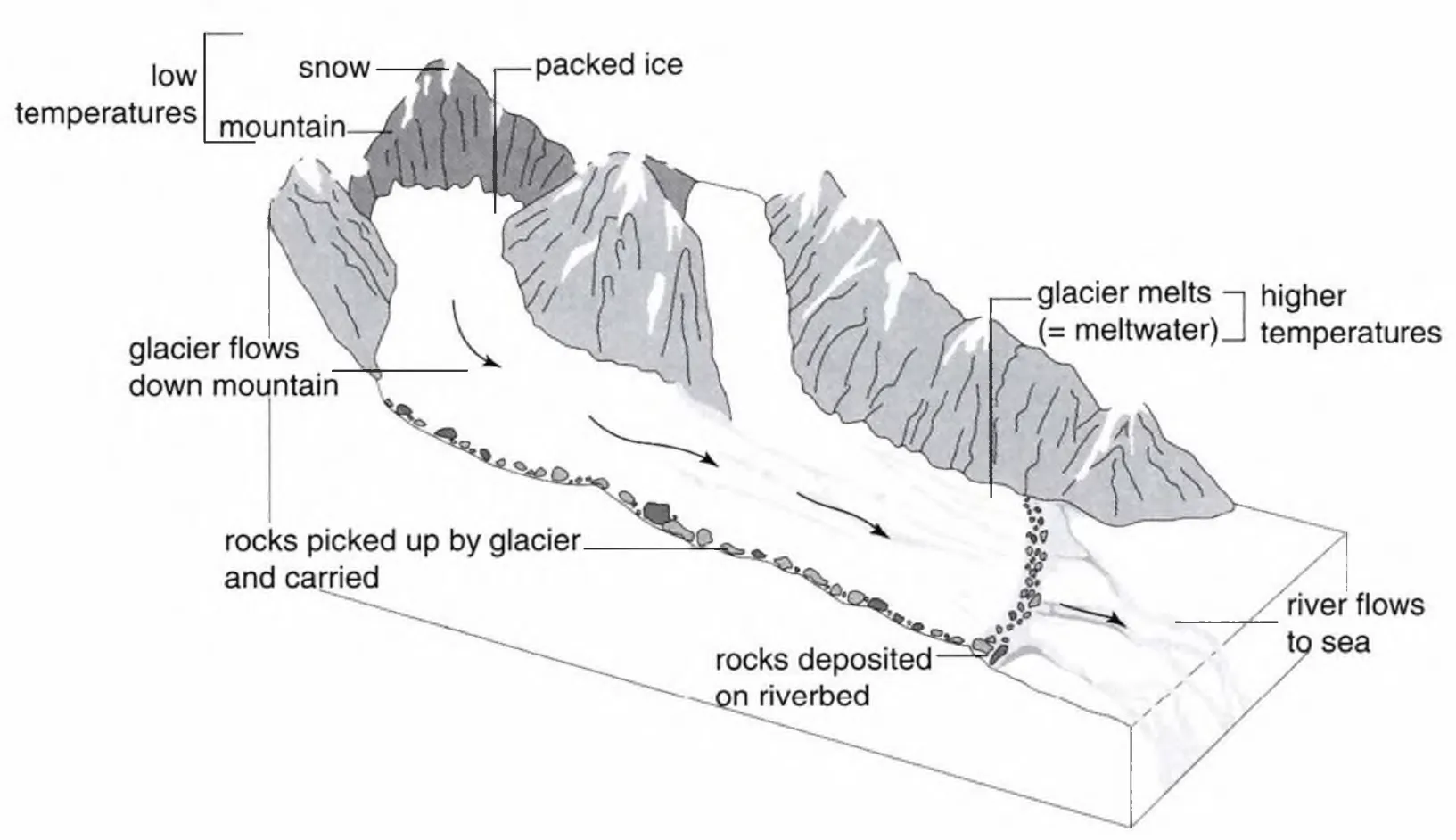Exam information | Describing a process
For IELTS Task 1 you may have to describe a physical process. This may be illustrated in the form of a diagram showing the different steps or stages in the process. In a process description some verbs will be in the passive and some in the active.
1. Look at the pictures and the labels. Complete the text with active or passive forms of the verbs in brackets.

The diagram (show) the process of harvesting wheat. First of all the wheat plants (1) (cut) by a combine harvester. Then the machine (2) . (separate) the wheat from the straw. The wheat (3) (take) to the barn where it (4) (store).The straw (5) . (put) into bales and (6) . (leave) in the field. Finally the wheat is (7) (transport) to factories to be made into food products.
2. Look at the diagram on the opposite page and put the sentences in the correct order, 1-8 .

3. To describe a process, you can expand the labels from a diagram into full sentences.
Label: Rivers carry pollution to sea.
Full sentence: Pollution is carried to the sea by rivers.
Label: Clouds store pollution / pollution turns to acid rain / acid rain falls.
Full sentence: Pollution is stored in clouds and falls as acid rain.
Notice that the labels often do not include articles (a / the) or prepositions (in / o n / at); some labels are just nouns or verbs. You will need to change these by making them full subject + verb + object sentences, and adding any other words that are necessary
Look at the diagram below and use the labels and the notes below to write full sentences.

1. during / eruption / magma rises / volcano's main vent
During an eruption magma rises up the volcano's main vent.
2. magma / erupt from / crater / top / volcano
3. magma / change into / lava
4. ash cloud/form /above/volcano
5. lava flows down / side / volcano
6. many trees / killed / lava
Exam tip | Showing the order of stages
The first sentence of a process description should explain what the diagram shows.
To show the order of stages, use sequence adverbs:
Use first, firstly or first of all for the first stage.
Use secondly/ next/ then/ and then to describe each of the following stages.
Use finally for the last stage.
You can also use clauses with when or after to show sequence:
When the apples are ripe, they are picked and packed into boxes.
After the wheat is harvested, it is taken to the barn.
3. Look at the diagram below. Complete the text with words showing sequence from the Exam tip box.

This diagram shows how a glacier is formed and how it moves and changes.
(1) a large amount of snow falls on the top of a mountain. Because the
temperature at the top of the mountain is very low, this snow never melts.
(2) more snow falls on top of it, the snow turns to ice. Eventually, a lot of ice is packed together, and (3) it forms a glacier. The glacier becomes very heavy and it starts to move slowly down the mountain.
Now write more sentences to describe the rest of the process. Remember to include some active and some passive verbs.
Suggested Answer
Rocks underneath the glacier are picked up and
carried along. When the glacier reaches the
bottom of the mountain, it starts to melt. The ice
from the glacier is turned into meltwater. Next,
this meltwater becomes a river and the rocks
from the glacier are deposited on the riverbed.
Finally, the river flows to the sea.
|

